When one of Newmarket’s most celebrated residents, Margaret Davis, heard that Heather, my wife, and I were going to Scotland on vacation she insisted we visit Airth, the Town where her mother was born. 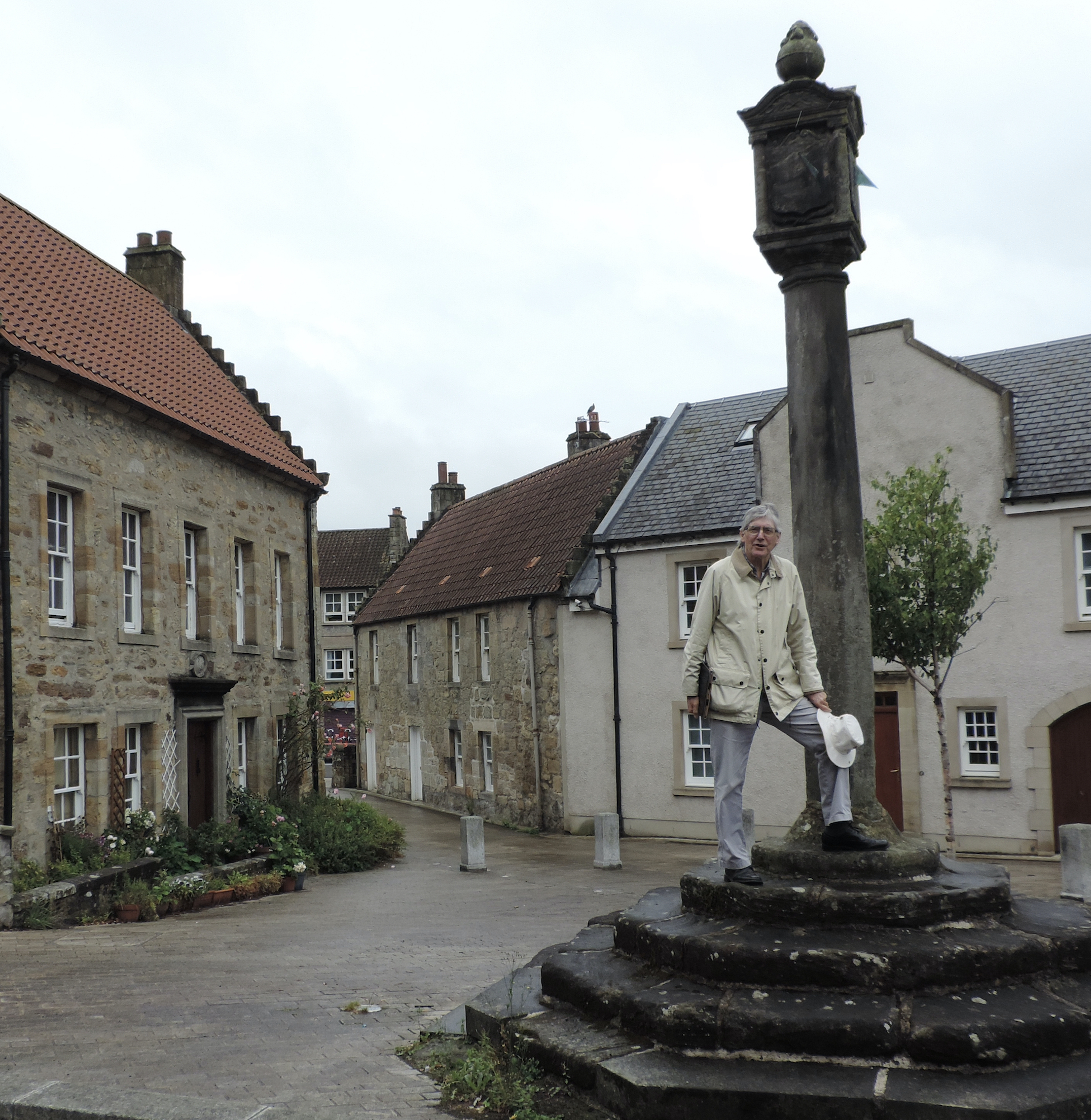
I explain Airth is not on our itinerary – in fact it is in the opposite direction to where we are going.
Margaret, still as sharp as a tack at 100, is not prepared to let an inconvenient detail like that change her settled view that Airth is the place to visit.
Next comes a treasured 1964 edition of the Scots Magazine, hand delivered to my front door.
She has flagged an old photograph of the 1697 Mercat Cross (or Market Cross) on which she played as a young girl. A few yards away stands an impressive old house dating from 1722.
On our itinerary
Airth is now on our itinerary. (Photo right: me on the Mercat Cross)
I show Margaret the photos of the Mercat Cross in the heart of the old village.
She tells me the years just melt away, bringing back memories of her childhood.
I figure that's as good a reason as any to visit Airth.
This email address is being protected from spambots. You need JavaScript enabled to view it.
Click “read more” Pilgrimage to Airth (below the photo) for my Postcard from Scotland.
Below: Me and Margaret at her 100th birthday party on 25 June 2022 at the Old Town Hall in Newmarket.
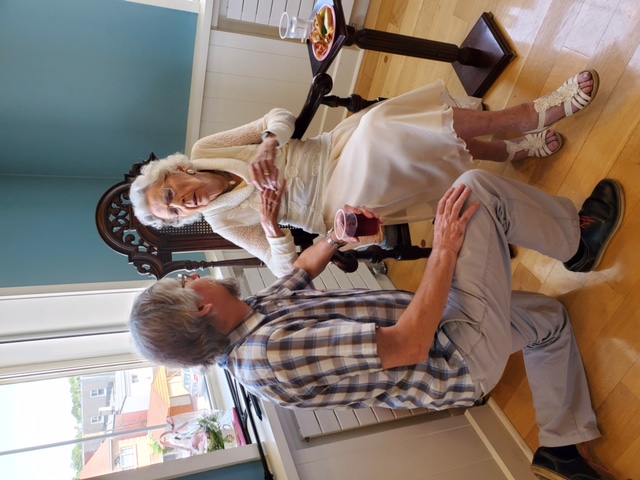
POSTCARD FROM SCOTLAND
Edinburgh in August is a vibrant, colourful and pulsating place – quite unlike the dour, grey, Presbyterian city where I grew up.
Three festivals are happening at the same time – the official one with symphonies and opera; the Fringe with over 3,000 comedy, music, dance and other acts performing out of pubs, clubs and church basements. Anywhere with space. And then there is the Book Festival with its own delights. And, of course, there is the Tattoo. All bagpipes and tartan.
Astonishingly, we learn that Heather’s cousin from British Columbia is also in town and we jump on a tour bus to see the sights with me showing off, filling in the details whenever the tour guide pauses to take a breath. 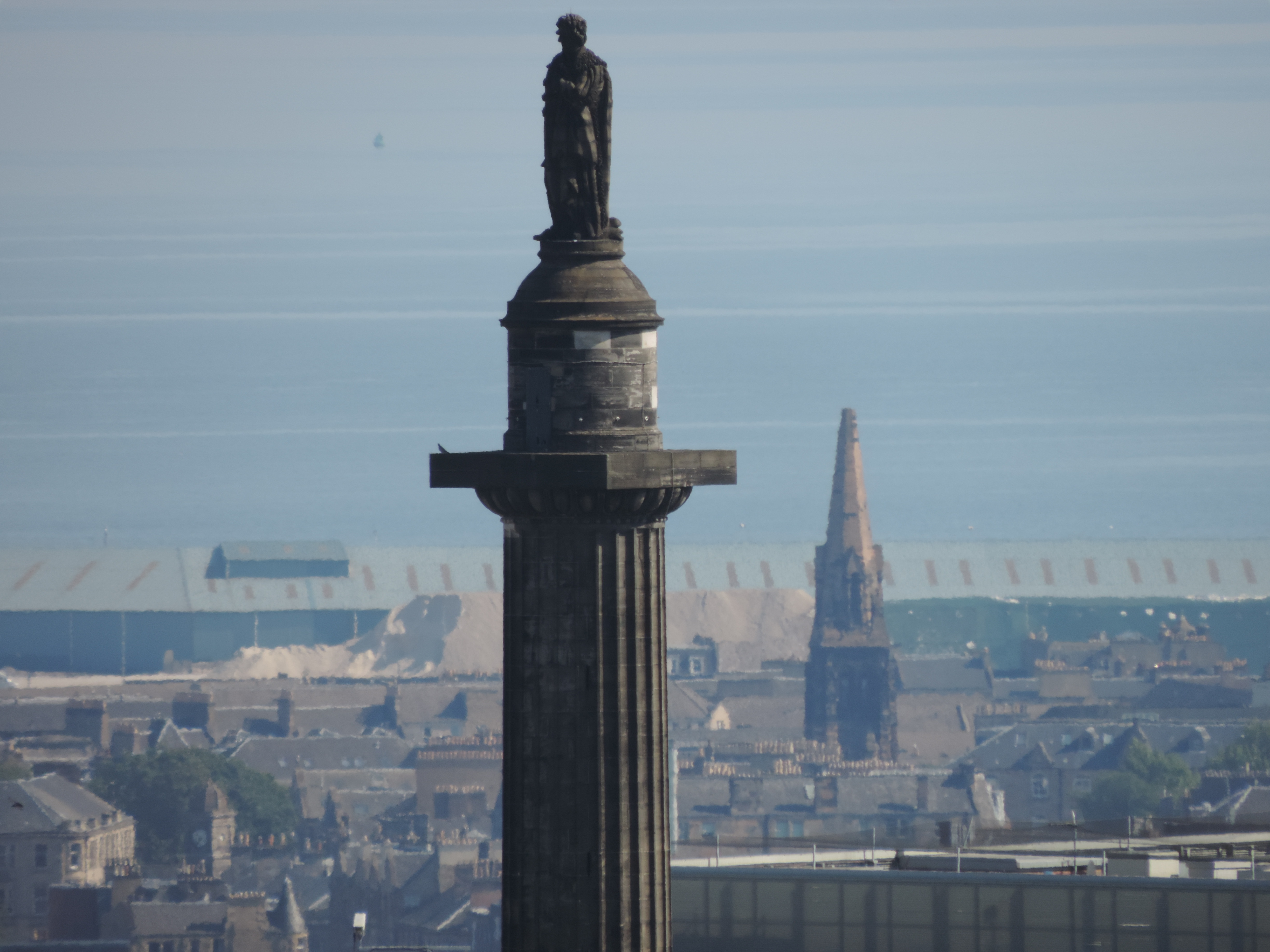
Henry Dundas and slavery
We pass the huge commemorative column dedicated to Henry Dundas, 1st Vicount Melville, who has looked out over Edinburgh for over 200 years. At the base of the column is a plaque, placed by the City of Edinburgh Council a few years ago which draws attention to his association with the transatlantic slave trade.
We visit the glorious Parliament Hall (open to the public but not advertised as such) where the Scottish Parliament sat until it was dissolved in 1707 following the union with England and Wales. At the far end, under the magnificent 1641 oak trussed roof, is yet another huge marble statue of Henry Dundas. The place is hushed and empty. Outside a street carnival is going on.
Now we are off to a Fringe comedy show on the state of the Scottish nation.
A special guest, unannounced, is on the platform alongside three comedians. We discover it is none other than the First Minister of Scotland, Nicola Sturgeon. (There is a joke in there somewhere)
After an hour of banter and laughter it’s over to the audience.
Scotland and Independence: haggis, bagpipes and tartan
I grab the microphone and tell the packed hall that Boris Johnson won the Brexit referendum on the back of a lie – that, post Brexit, there would be an extra £350M per week going into the National Health Service.
I ask Nicola Sturgeon if and when there is a referendum on Scottish Independence do we not need an independent, accredited fact-checker who can call out politicians when they lie?
I get a huge round of applause. No-one in Scotland likes Boris Johnson.
Sturgeon shakes her head. She says the facts on Scottish independence have all been published by the Scottish Government and the Scottish National Party – 700 pages of them at the time of the referendum in 2014. That's pure hokum. In fact the mighty tome said nothing about the hard border that would be needed with England, the Scottish currency nor what would happen to pensions and social security and a million other policy areas which are all integrated at UK level.
Scottish independence would be a thousand times more consequential than Brexit. But as long as people are swayed by the sentimental images of haggis and bagpipes she’s home and dry. She gets an easy ride. 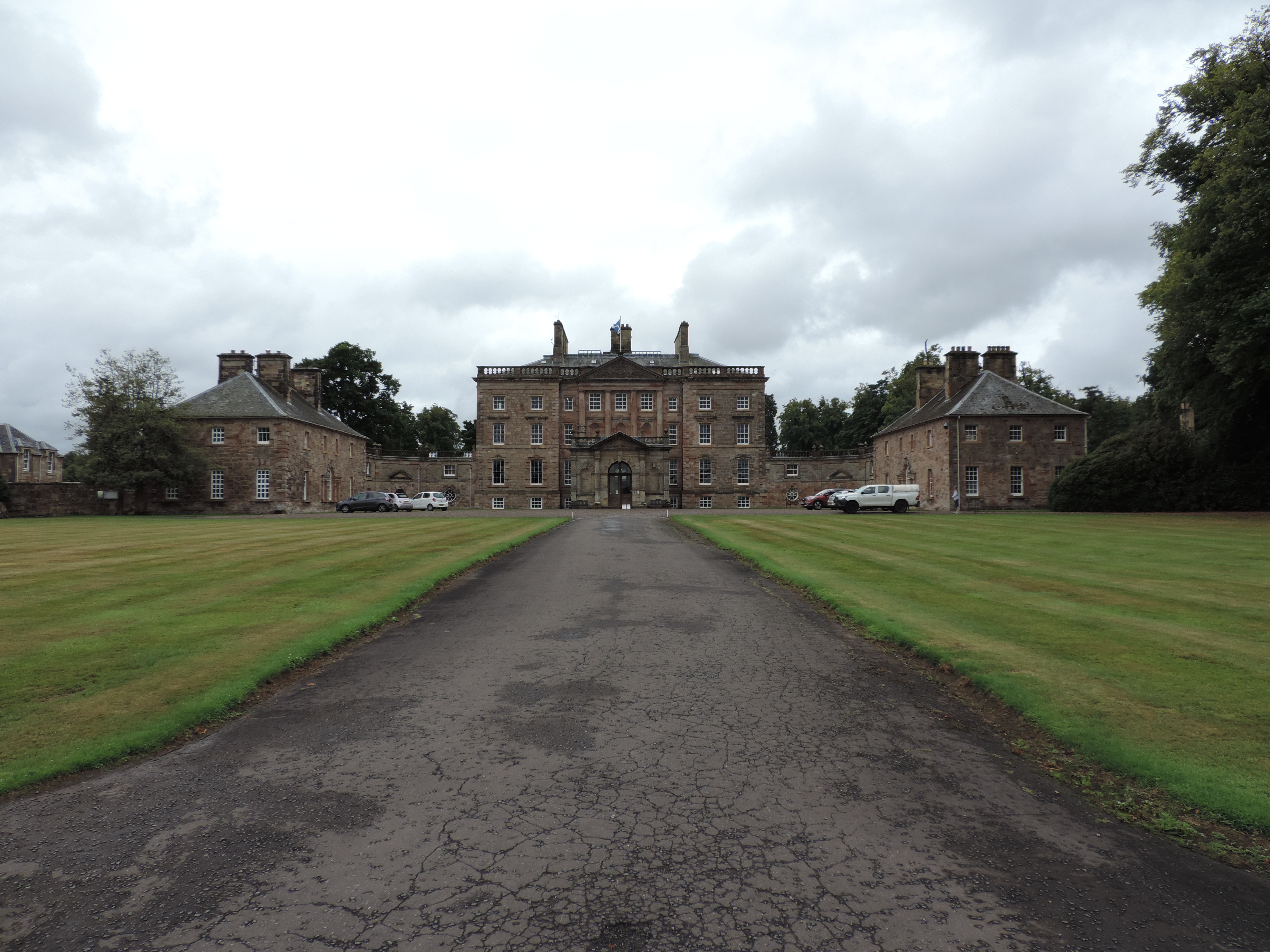
Dundas and his descendants
Now we are off to Arniston House, just outside Edinburgh, the ancestral home of the Dundas family. The tour of just eight of us is led by an 83 year-old descendant of Henry Dundas, Althea Dundas-Bekker. Two hours later when the others have left we chat in the wonderful library. She is a redoubtable woman with an engaging personality who tells me she feared a few years ago there would be a march on the house by thousands of angry people protesting Dundas’s role in slowing down the abolition of slavery in the British Empire. She says things are calmer now.
The estate covers 6,000 acres. How did he get the money to buy all this? She smiles.
As we leave we are shown the etched name of a young girl on a window pane, scratched with the year 1850. The girl went on to become a voice in women’s rights to education on the same basis as men.
Scotland: the Global History
Now we are back in Edinburgh to hear Professor Murray Pittock talk about his new book on Scottish history – a magisterial sweep from 1603 (the union of the Crowns) down to the present. He presents Scotland’s history in global terms, not from a closed nationalist perspective. It is the perfect opportunity for me to ask him about Toronto’s decision to rename Dundas Street.
I want to know if Edinburgh’s Dundas Street should be renamed. No, he says, before launching into a long exposition on historical context.
Next we are off to the famous Dean Cemetery where the 19th century Scottish elite lie buried. It is a snapshot of Empire. The colonial administrators; the lawyers; the generals; the politicians. They ended up here along with the Edinburgh born John Irving who sailed with Franklin in the ill-fated expedition to find the North West passage.
A laugh a minute. Or not
Now more Fringe shows. Some truly execrable (What Women Want) and others, well, very different. The Australian Aboriginal Comedy All-Stars. The comic talks of the last of his three wives: 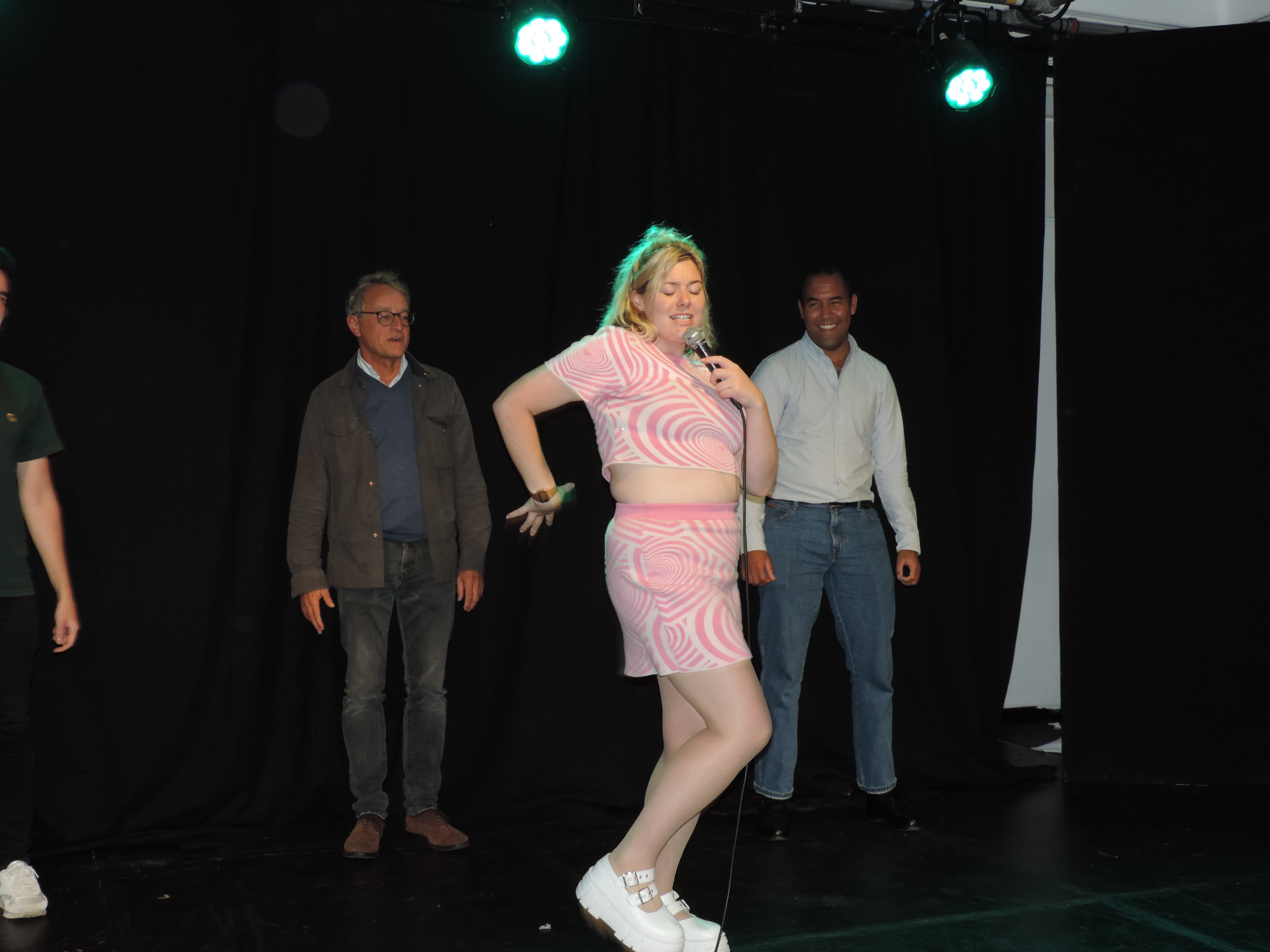
She tells him: “You’ll never find another woman like me.”
He replies: “That’s my intention.”
Oh dear!
But I hear gales of laughter from the many Australians in the audience.
Nepobabes
Now it’s off to see Boris Johnson’s daughter, Charlotte, who talks about how young women like her (whom she dubs “nepo-babes”) get where they are. (Photo right) Brazenly, she says it’s because of nepotism. She is now playing with the audience. Asking how many were privately educated and so on. I am sitting in the front row and she zeroes in, complimenting me on my bright yellow T-shirt. She invites me on to the stage to dance with her but I decline. I think about telling her I knew her father – certain that would change the dynamic of her show. But I change my mind at the last moment.
Now we are visiting Newhailes House, gifted to the Scottish National Trust by the last of the Dalrymples – a family that sat at the top of the Scottish legal profession for two hundred years. Samuel Johnson was a regular visitor, remarking that the library was the finest he had known. (All the books went to the National Library of Scotland in lieu of death duties.)
After two weeks we are leaving Edinburgh for a sweep through the borders, staying in Dryburgh and visiting Melrose on our way to Dumfries and Galloway.
The Romans in Southern Scotland
We visit the splendid new Trimontium museum in Melrose which, with dazzling visual displays, explains life, work and death during the Roman occupation. 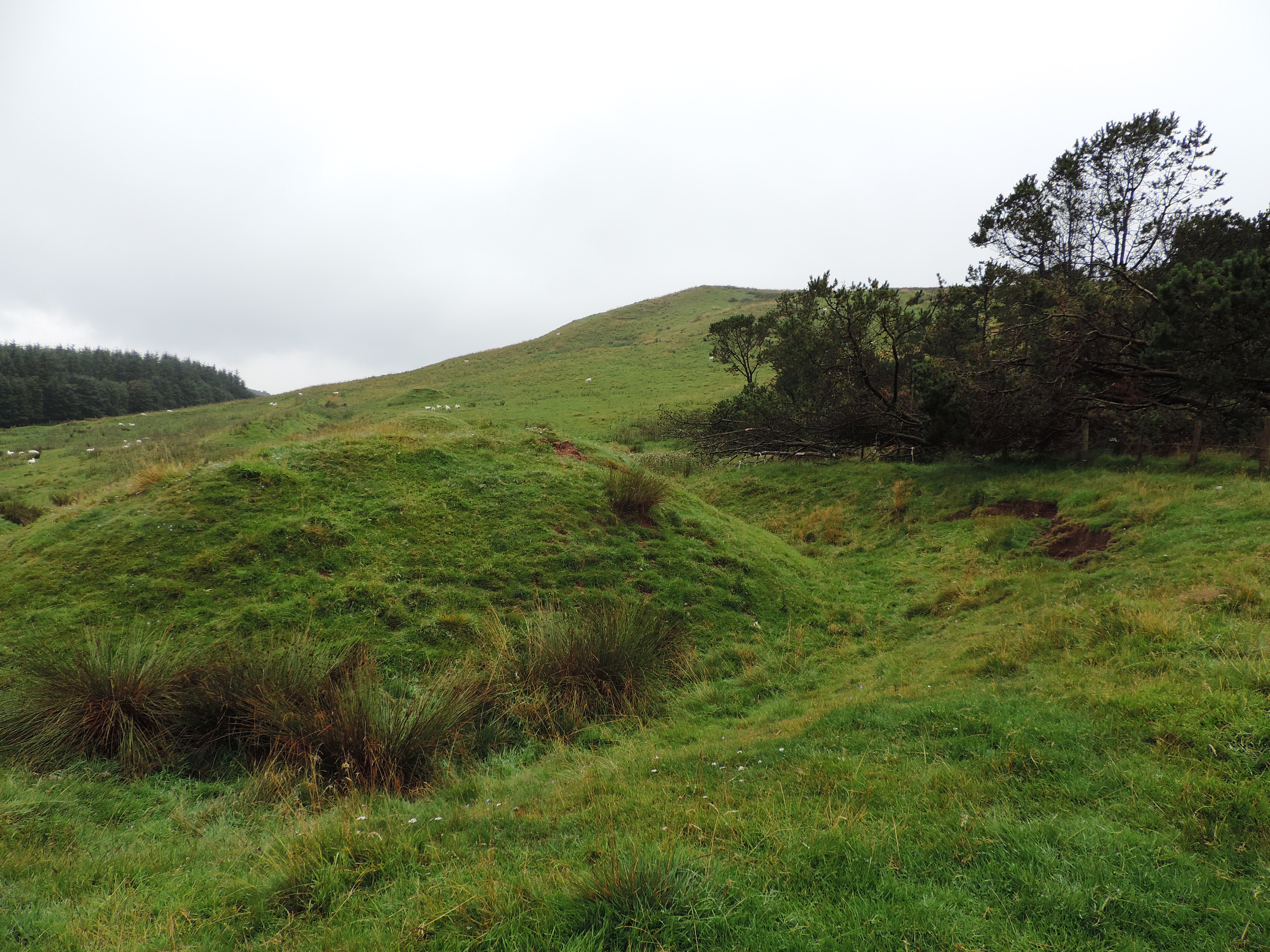
Now we are on our way to Burnswark Hill. This really is undiscovered Scotland, well off the beaten track. It is the site of a Roman siege with the bemused Picts (as the early Scots were known) on top of the flat hill and the Romans camped below, hauling their catapults onto specially constructed earth mounds. The Picts literally didn’t know what hit them. A constant hail of whistling stones the size of golf balls rained down, decimating them.
The evidence is all there - in the surviving land forms. You've just got to know what to look out for. (Photo right: one of the mounds on which the Roman catapults were placed.)
Do you know Tony Blair?
We stay in a terrific Bed and Breakfast at the end of a long winding single-track road. The owner, I discover, was educated at Fettes College in Edinburgh (fees for boarders an eye-watering CAN$61,000 per year) and was in the same year as former Prime Minister, Tony Blair. I’m thinking about the Romans in Scotland and all he wants to do is talk about politics.
On we go to Morton Castle which nestles in deep countryside north of Dumfries. We are alone in this beautiful tranquil spot. The castle, which was last occupied in 1715, is now a magnificent ruin but much remains. The castle was the scene of many turbulent events over the centuries as the English and Scots clashed in the border lands.
Now Heather is doing a few days of serious family history while I’m helping out at the excellent reference library in Dumfries. Heather’s great, great, great grandfather, James Halliday, left for Canada in 1856 with his wife, Catherine, and three children.
Please don't stand on the carpets!
Now we are on the home stretch and drop into Dumfries House near Cumnock. I am no great fan of Prince Charles but he deserves a round of applause for stepping in to save the old house and its contents which were to have been put up for auction. Its collection of Chippendale furniture is priceless.
I walk past a bookcase worth (at least) CAN$17M. (A Swiss collector had offered that sum if the piece could be pulled from the planned auction). There are no guardrails or ropes or barriers anywhere in the house to preserve its lived-in feel. Indeed, Prince Charles stays in the house when he visits.
Dumfries House now employs more than 200 local people – the second largest employer in East Ayrshire after the Council.
But my abiding memory of the house are the old carpets, dating from the 1750s.
The colours are deep and vibrant and visitors are asked to walk on new runners woven in the same patterns as the originals.
I see a woman step on to the original and our eyes meet.
She bites her lip and mouths the word: “Sorry!”
Her secret is safe with me.
This email address is being protected from spambots. You need JavaScript enabled to view it.
